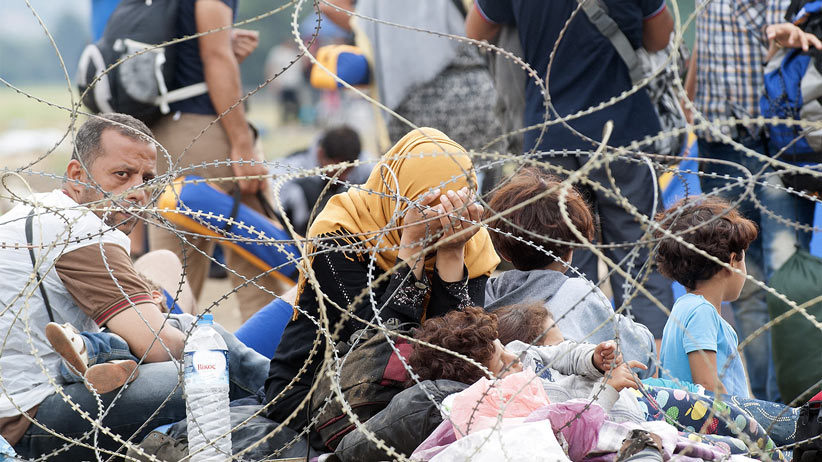European refugee crisis? Nope.
‘We didn’t start calling it a “crisis” until people began arriving in Europe,’ Scott Gilmore writes
Share

There is a refugee crisis. Just not in Europe.
According to the United Nations, there are now 60 million refugees globally. This stunning number, equivalent to the entire population of Italy, hasn’t been seen since the Second World War.
The total refugee population has been above 40 million since 2007, driven by fighting in Central Asia, the Middle East and Africa. But we didn’t start calling it a “crisis” until some of them began arriving in Europe.
Photos of crowded boats and people crawling through barbed wire do give the impression that Europe is being overrun. This year, Germany alone expects 800,000, and the total European number could surpass one million.
That’s still less than two per cent of the global head count. The total number of refugees in Europe is 3.1 million, not even one per cent of its population. Turkey hosts more than three times as many per capita. In the U.S., the total number of illegal migrants is 11.3 million; proportionally, several times greater than in Europe.
Nonetheless, European leaders believe it’s a crisis. Hungary is building a wall on its border with Serbia. Likewise, Bulgaria is raising barriers on its Turkish frontier, and the United Kingdom has installed taller fences at the Eurotunnel entrance. There is a call to establish reception centres in southern Europe and, on Sept. 14, European interior ministers are convening an emergency meeting to determine additional measures.
Why the alarm? It would be easy to blame racism. There’s no denying that many Europeans are deeply worried that Third World migrants threaten their culture. The plot of a 1973 novel, Le Camp des saints by French author Jean Raspail, is often cited as emblematic of this fear: Due to overpopulation, a flotilla of several million South Asian migrants arrive in France. Motivated by liberal guilt, Europeans allow them in. The new arrivals, refusing to assimilate, then destroy Western civilization. As outlandish as the plot seems, the book returned to the bestseller list only a few years ago.
It’s true: Immigration has changed the face of Europe. In London now, only 44 per cent of the population is both white and British. In Birmingham and Leicester, the majority are visible minorities. Newspapers across the continent are filled with daily stories of immigration problems, Roma crime rates, and welfare fraud by new arrivals. But, in most cases, the macro data suggest Europe has reaped immense economic benefits from migration.
The continent is also grappling with less obvious, but very serious, demographic problems. The population is both aging and shrinking. In other words, every year there are fewer taxpayers to support more retirees. The long-term viability of its welfare state is very much in question.
The contrasting use of the terms “migrant” and “refugee” is aggravating the debate. Politicians and the press tend to use the first term, implying that the new arrivals are being pulled toward Europe in search of economic opportunities. The United Nations insists that the vast majority of the new arrivals are in fact refugees, people who are being pushed from their homelands due to persecution or conflict. Those who say “refugee” know these people can’t possibly be turned away. Those who say “migrant” know a Europe suffering record jobless rates (youth unemployment is above 20 per cent) can’t possibly absorb more people.
In some ways, both sides are right. There can be no question that the vast majority of the people arriving on European shores are fleeing horrific conflict. Most are coming from Syria, where they were caught between violent rebel groups such as Islamic State and the Assad regime dropping barrel bombs from above.
But, once they arrive safely in Europe, there is also no question that most of them are turning into economic migrants. The men breaking into U.K.-bound transport trucks in Calais have passed through six or seven other European countries to get there. Likewise, the 800,000 people arriving in Germany this year travelled through a similar number of countries, any one of which could have provided safe haven.
There is also the fact that the term “refugee” implies someone who has been displaced, but intends to return home when he or she can. It is hard to believe those arriving in Europe right now are only passing through.
Can Canada play a role? Possibly. According to the UNHCR, we are currently hosting 165,000 refugees, a number that could be increased several fold before anyone noticed. And although the Conservative government just promised to double its earlier pledge of resettling 10,000 Syrian refugees, that pledge only meets a fraction of a fraction of the overall need. It has also been virtually impossible to learn how we are doing against that goal.
But even if Canada (and Europe) threw the doors wide open, the only real solution is to end the conflicts that created this unprecedented flow of humanity. Sadly, there are few, if any, reasons to be hopeful about that.